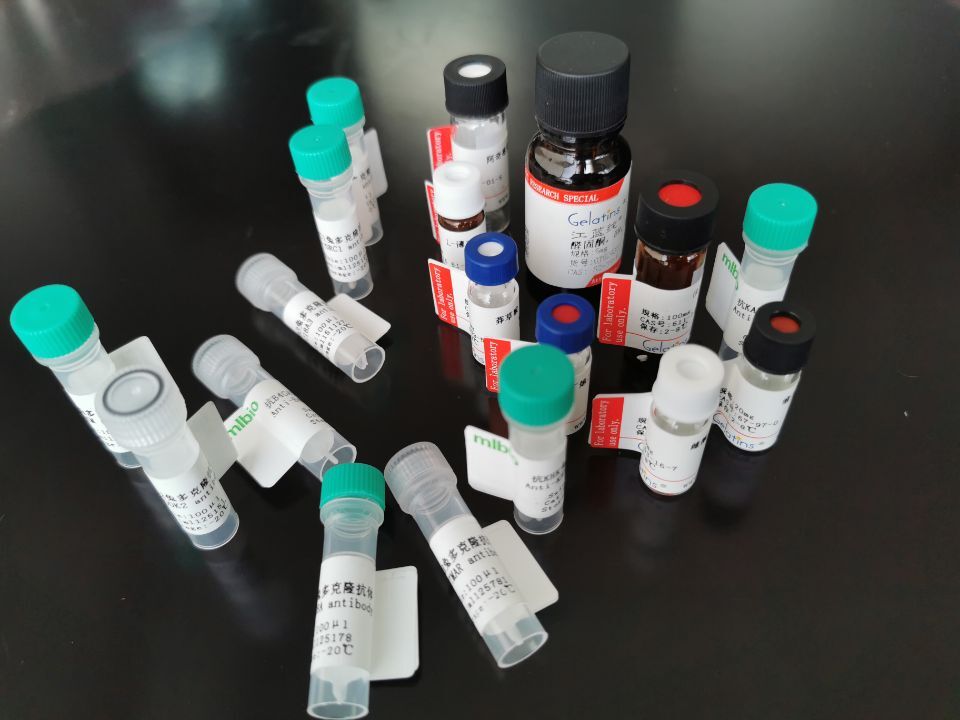|
Full name: |
nuclear protein 1, transcriptional regulator |
|
Synonyms: |
P8; COM1 |
|
Swissprot: |
O60356 |
|
Gene Accession: |
BC002434 |
|
Purity: |
>85%, as determined by Coomassie blue stained SDS-PAGE |
|
Expression system: |
Escherichia coli |
|
Tags: |
His tag C-Terminus, GST tag N-Terminus |
|
Background: |
Transcription regulator that converts stress signals into a program of gene expression that empowers cells with resistance to the stress induced by a change in their microenvironment. Thereby participates in regulation of many process namely cell-cycle, apoptosis, autophagy and DNA repair responses (PubMed:16478804, PubMed:19650074, PubMed:16300740, PubMed:19723804, PubMed:11056169, PubMed:22858377, PubMed:11940591, PubMed:18690848, PubMed:22565310, PubMed:20181828, PubMed:30451898). Controls cell cycle progression and protects cells from genotoxic stress induced by doxorubicin through the complex formation with TP53 and EP300 that binds CDKN1A promoter leading to transcriptional induction of CDKN1A (PubMed:18690848). Protects pancreatic cancer cells from stress-induced cell death by binding the RELB promoter and activating its transcription, leading to IER3 transactivation (PubMed:22565310). Negatively regulates apoptosis through interaction with PTMA (PubMed:16478804). Inhibits autophagy-induced apoptosis in cardiac cells through FOXO3 interaction, inducing cytoplasmic translocation of FOXO3 thereby preventing the FOXO3 association with the pro-autophagic BNIP3 promoter (PubMed:20181828). Inhibits cell growth and facilitates programmed cell death by apoptosis after adriamycin-induced DNA damage through transactivation of TP53 (By similarity). Regulates methamphetamine-induced apoptosis and autophagy through DDIT3-mediated endoplasmic reticulum stress pathway (By similarity). Participates to DNA repair following gamma-irradiation by facilitating DNA access of the transcription machinery through interaction with MSL1 leading to inhibition of histone H4' Lys-16' acetylation (H4K16ac) (PubMed:19650074). Coactivator of PAX2 transcription factor activity, both by recruiting EP300 to increase PAX2 transcription factor activity and by binding PAXIP1 to suppress PAXIP1-induced inhibition on PAX2 (PubMed:11940591). Positively regulates cell cycle progression through interaction with COPS5 inducing cytoplasmic translocation of CDKN1B leading to the CDKN1B degradation (PubMed:16300740). Coordinates, through its interaction with EP300, the assiociation of MYOD1, EP300 and DDX5 to the MYOG promoter, leading to inhibition of cell-cycle progression and myogenic differentiation promotion (PubMed:19723804). Negatively regulates beta cell proliferation via inhibition of cell-cycle regulatory genes expression through the suppression of their promoter activities (By similarity). Also required for LHB expression and ovarian maturation (By similarity). Exacerbates CNS inflammation and demyelination upon cuprizone treatment (By similarity). |
- 首页
- 科研产品
ELISA试剂盒
PCR试剂盒
生化试剂盒
细胞系
细胞库
基础培养基
完全培养基
原代细胞
细胞专用培养基
菌株
科研抗体
生化试剂
病理染色液
标准品
血清
食品检测类试剂盒
- 致病菌
- 毒素Toxin
- 动物保健
- 食品添加剂
- 生理活性物
- 农药Pesticide
- 科研项目
- 色素Pigment
- 抗生素Antibiotic
- 性激素Hormone
- 瘦肉精β-agonists
- 重金属Heavy-Metal
- 其他食品检测试剂盒
- 防霉剂Mold inhibitor
- 抗病毒Antivirus drug
- 过敏原/营养抑制因子
- 乳品添加物Dairy additive
- 材料助剂Modifying agent
- 水产杀菌剂Aquatic fungicide
- 食品加工危害物Food processing hazards
- 环境污染物Environmental contaminants
- 保化添加物Additives in Healthcare and cosmetics
- 公司简介
- 公司新闻
- 技术服务
- 代理品牌
- 订购中心
- 加入通蔚
 购物车
购物车 帮助
帮助
 021-54845833/15800441009
021-54845833/15800441009
